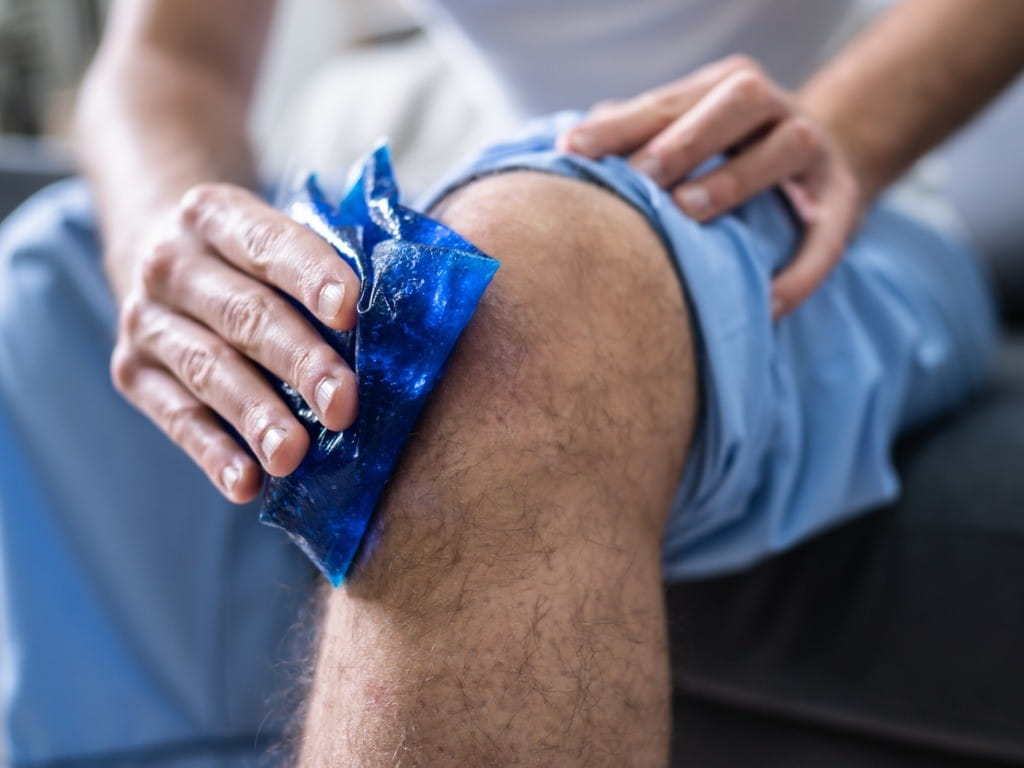What's Inside an Ice Pack?

The Bottom Line
Ice packs are common household items, which makes them accessible to small children. There are many different types of reusable ice packs. Typically, unintentionally swallowing some of their liquid contents causes minor effects such as mouth irritation. However, depending on the ingredients and the amount swallowed, ice packs do have the potential to cause toxicity.

The Full Story
Ice packs are found in millions of homes as they are used for a wide variety of purposes such as icing an injury and keeping food cold. They come in many forms and contain different ingredients depending on the type of ice pack. Some are in cute shapes with soft, gel-like beads in them. Other ice packs turn into solids when frozen but are soft and squishy when thawed. There are also one-time use "instant" ice packs, which can be found in many first-aid kits. These are stored at room temperature and only turn cold when squeezed. Depending on the type of ice pack, results of exposure can range from nontoxic to serious.
The most concerning type of ice pack is the instant ice pack. These are filled with water and a chemical reactor. When the bag is squeezed, the water interacts with the chemical to start a reaction that lowers the temperature of the water to almost freezing. The chemical reactors in these ice packs are typically ammonium nitrate, calcium ammonium nitrate, or urea. Of these, the most toxic ingredient if swallowed is ammonium nitrate. Ammonium nitrate can cause dilation of blood vessels. This can lower blood pressure and reduce the amount of blood flowing to body organs. It might also cause conditions called methemoglobinemia (impairment of the oxygen-carrying ability of red blood cells) and hemolysis (destruction of red blood cells). Symptoms of methemoglobinemia and hemolysis include bluish coloring especially of lips or nail beds, shortness of breath, dizziness, fatigue, and headache.
Calcium ammonium nitrate is a mixture of calcium carbonate and ammonium nitrate. Since calcium carbonate is nontoxic, calcium ammonium nitrate is less toxic than a comparable amount of ammonium nitrate. Calcium ammonium nitrate still has the same toxic properties as ammonium nitrate, but it requires a larger swallowed amount to have the same effect. Urea is the least concerning reactor in instant ice packs, but it can cause nausea, vomiting, dizziness, drowsiness, and confusion if enough is swallowed.
Reusable ice packs typically contain water, something to lower the freezing temperature, a thickening agent, silica gel, and non-toxic blue coloring. The concerning component in reusable ice packs is the ingredient used to lower the temperature, which is usually propylene glycol. A small taste of reusable ice pack liquid typically only creates mild irritation. With large ingestions, it is possible to develop symptoms similar to alcohol intoxication such as severe drowsiness, unresponsiveness, and slowed breathing.
Other kinds of reusable ice products come in different forms like reusable ice cubes with liquid in them and ice packs filled with small gel beads. Reusable ice cubes are typically filled with distilled water. The gel beads in ice packs are usually made of sodium polyacrylate, which can be irritating if swallowed. Some early reusable ice packs contained very toxic substances such as diethylene glycol or ethylene glycol (antifreeze). These types of ice packs have been recalled and are generally no longer available.
Treatment for ingestion of modern ice packs or products is rinsing out the mouth and drinking a few sips of water to clear the mouth and throat. Mild irritation and upset stomach can be managed at home with small sips of water. Eye exposures should receive immediate irrigation of the eyes with room temperature water for 15 minutes. Persistent eye pain or other symptoms might need medical examination and treatment. Skin exposures should be immediately washed with soap and water. Most often, skin and eye exposures will respond quickly to irrigation of the affected area.
If you think someone might be having adverse effects from a reusable ice product, immediately call Poison Control at 1-800-222-1222 or check the webPOISONCONTROL® online tool for help. Whether you call or log on, expert assistance is available 24 hours a day.
Diana N. Pei, PharmD
Certified Specialist in Poison Information
Poisoned?
Call 1-800-222-1222 or
Prevention Tips
- Use ice packs according to the instructions.
- Discard any broken or leaking ice packs.
- Closely supervise children using instant ice packs.
This Really Happened
Case 1. Poison Control was contacted by a school nurse after an 8-year-old boy's reusable ice pack broke in his lunchbox. He licked some of the gel thinking it was yogurt. He had no symptoms at the time of the call other than being anxious. Poison Control instructed the nurse to give the boy a drink of his choice to help dilute what he had swallowed. Poison Control called the school nurse 1½ hours later learned that the boy remained asymptomatic and had returned to class.
Case 2. Poison Control was called by a father of a 2-year-old girl who was found sucking on an instant ice pack that had a pinhole in it. When the father squeezed the ice pack, some liquid came out, but the girl denied eating any. The ingredients listed were calcium ammonium nitrate and water. Poison Control confirmed with the father that the girl had no medical conditions that would increase her risk for methemoglobinemia. Poison Control followed up with the father 2 hours later, and the girl remained asymptomatic.
For More Information
References
Are the gel beads in ice packs toxic [internet]? Askinglot.com; updated 2020 May 1 [cited 2021 September 7]
How do instant ice packs work [internet]? eHow; updated 2017 Aug 30 [cited 2020 Mar 1].
What are the ingredients in gel ice packs [internet]? Reference [cited 2020 Mar 2.]
Poisoned?
Call 1-800-222-1222 or
Prevention Tips
- Use ice packs according to the instructions.
- Discard any broken or leaking ice packs.
- Closely supervise children using instant ice packs.
This Really Happened
Case 1. Poison Control was contacted by a school nurse after an 8-year-old boy's reusable ice pack broke in his lunchbox. He licked some of the gel thinking it was yogurt. He had no symptoms at the time of the call other than being anxious. Poison Control instructed the nurse to give the boy a drink of his choice to help dilute what he had swallowed. Poison Control called the school nurse 1½ hours later learned that the boy remained asymptomatic and had returned to class.
Case 2. Poison Control was called by a father of a 2-year-old girl who was found sucking on an instant ice pack that had a pinhole in it. When the father squeezed the ice pack, some liquid came out, but the girl denied eating any. The ingredients listed were calcium ammonium nitrate and water. Poison Control confirmed with the father that the girl had no medical conditions that would increase her risk for methemoglobinemia. Poison Control followed up with the father 2 hours later, and the girl remained asymptomatic.
